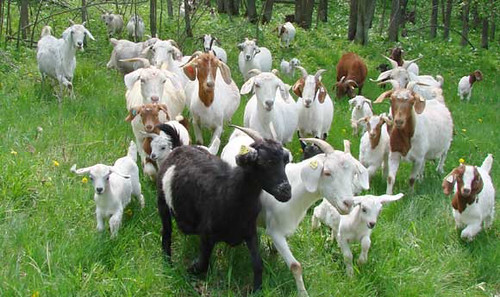
While most people associate farmers markets with fresh fruits and vegetables, farmers and ranchers actually bring a much more diverse range of products to the table every week. This year’s portfolio of grant recipients under the Farmers Market Promotion Program, administered by USDA’s Agricultural Marketing Service (AMS), reflected that diversity in its range of projects. Among the grant recipients are several enterprises in the Midwest that overcome barriers for small livestock producers to get their healthy meat options into local markets.
Access to certified slaughter facilities is one obstacle that Sustainable Farming Association of Minnesota (SFA) in Beltrami, Minn., is tackling head-on. Its goal is to expand the meat processing infrastructure in the region by creating access to locally-raised, lean meats directly from area farmers. Located in the far northern climes of the state -- an area designated as a food desert -- SFA hopes to add three to five meat processing facilities and increase the number of direct-marketing meat producers by 50 percent. With the added support of consumer education about the benefits of buying locally, demand is projected to increase by 30 percent.
In Downing, Wisconsin the Browse and Grass Growers Cooperative is also expanding access, specifically to produce, specialty grains and eggs. Moreover, the company continues to focus on grass-fed sheep and goat meat and value-added production, with an emphasis on halal-certified meats. By expanding offerings to area consumers and schools, the project will increase farmer capacity through extensive training in good agricultural practices (GAP), value-added processing, and direct marketing. These efforts will make positive impacts – both economic and cultural – in western Wisconsin, not to mention the potential of $1 million in sales in the next five years.
Finally, capping these Midwest efforts is Home Grown Cow in Evansville, Wis., whose project will bring Wisconsin livestock, poultry, and cheese producers into the digital marketplace and engage local producers in e-commerce. Through marketing, business development and technology, this producer’s network seeks to reach a hungry online market and tap into the projected $154 billion digital economy.
These projects, among many, demonstrate the diversity of ideas and need among the alternative marketing community. Distribution models and consumers are as varied as the localities they serve, and the Farmers Market Promotion Program continues to offer the investments needed to keep farmers profitable and meet the food access needs of consumers.
